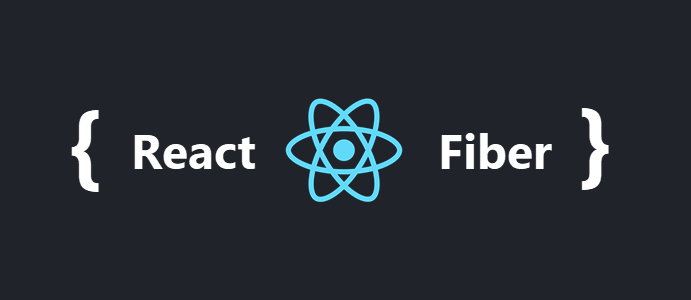前沿 React从18版本起,不推荐再使用老版本的ReactDOM.render方法,建议用两个新方法,createRoot和root对象的render来替代:
1 2 3 4 import { createRoot } from 'react-dom/client' ;const root = createRoot(document .getElementById('root' ));root.render(<App />
就让我么我们通过源码调试,一步步看看其中发生了什么。
hydrateRoot使用在ssr的,原理基本同createRoot。
简介 我们先看createRoot 方法,该方法至多接受两个参数,返回一个root对象,该root对象有两个方法:
render:用来把React元素渲染成DOM
unmount:卸载调用
createRoot()会控制传入的容器节点,render调用的时,会替换掉其中任何现有的DOM元素。createRoot()不会修改容器节点,只修改容器的子节点。可以将组件插入到现有的DOM节点而不覆盖现有的子节点。createRoot()不支持ssr,服务端渲染要用hydrateRoot()。
createRoot源码分析 首先进入react-dom/client.js的createRoot,其实就是调用react-dom的createRoot,其中参数c就是我们传入的root元素:
1 2 3 4 5 6 7 8 9 10 11 12 13 14 15 16 17 18 19 20 var m = require ('react-dom' );exports.createRoot = function (c, o ) i.usingClientEntryPoint = true ; try { return m.createRoot(c, o); } finally { i.usingClientEntryPoint = false ; } }; function createRoot$1 (container, options ) { if (!Internals.usingClientEntryPoint && !false ) { error('You are importing createRoot from "react-dom" which is not supported. ' + 'You should instead import it from "react-dom/client".' ); } } return createRoot(container, options); }
这里会提示,项目中需要从client.js引入,而不是直接从react-dom引入,这个就和client.js中的usingClientEntryPoint设置true对应上了。完成createRoot后会再设置为false。
createRoot 然后正式进入createRoot,其中开头有一些校验的逻辑和options的初始化,这里就不详细介绍
1 2 3 4 5 6 7 8 9 function createRoot (container, options ) var root = createContainer(container, ConcurrentRoot, null , isStrictMode, concurrentUpdatesByDefaultOverride, identifierPrefix, onRecoverableError); markContainerAsRoot(root.current, container); var rootContainerElement = container.nodeType === COMMENT_NODE ? container.parentNode : container; listenToAllSupportedEvents(rootContainerElement); return new ReactDOMRoot(root); }
创建FiberRoot对象 这是创建root对象的重要步骤,其中代码非常简单,就是创建FiberRoot结点:
1 2 3 4 5 6 function createContainer (containerInfo, tag, hydrationCallbacks, isStrictMode, concurrentUpdatesByDefaultOverride, identifierPrefix, onRecoverableError, transitionCallbacks ) var hydrate = false ; var initialChildren = null ; return createFiberRoot(containerInfo, tag, hydrate, initialChildren, hydrationCallbacks, isStrictMode, concurrentUpdatesByDefaultOverride, identifierPrefix, onRecoverableError); }
在进入之前,先看下FiberRootNode的类:
1 2 3 4 5 6 7 8 9 10 11 12 13 14 15 16 17 18 19 20 21 22 23 24 25 26 27 28 29 30 31 32 33 34 35 36 37 38 39 40 41 42 function FiberRootNode (containerInfo, tag, hydrate, identifierPrefix, onRecoverableError ) this .tag = tag; this .containerInfo = containerInfo; this .pendingChildren = null ; this .current = null ; this .pingCache = null ; this .finishedWork = null ; this .timeoutHandle = noTimeout; this .context = null ; this .pendingContext = null ; this .callbackNode = null ; this .callbackPriority = NoLane; this .eventTimes = createLaneMap(NoLanes); this .expirationTimes = createLaneMap(NoTimestamp); this .pendingLanes = NoLanes; this .suspendedLanes = NoLanes; this .pingedLanes = NoLanes; this .expiredLanes = NoLanes; this .mutableReadLanes = NoLanes; this .finishedLanes = NoLanes; this .entangledLanes = NoLanes; this .entanglements = createLaneMap(NoLanes); this .identifierPrefix = identifierPrefix; this .onRecoverableError = onRecoverableError; this .mutableSourceEagerHydrationData = null ; this .effectDuration = 0 ; this .passiveEffectDuration = 0 ; this .memoizedUpdaters = new Set (); var pendingUpdatersLaneMap = this .pendingUpdatersLaneMap = []; for (var _i = 0 ; _i < TotalLanes; _i++) { pendingUpdatersLaneMap.push(new Set ()); } switch (tag) { case ConcurrentRoot: this ._debugRootType = hydrate ? 'hydrateRoot()' : 'createRoot()' ; break ; case LegacyRoot: this ._debugRootType = hydrate ? 'hydrate()' : 'render()' ; break ; } }
之后运行此处实例化的过程中,会初始化pendingUpdatersLaneMap,其中TotalLanes在源码中是31。
初始化root后(new了一个FiberRootNode),通过createHostRootFiber创建一个新的FiberNode对象,然后挂在root的current上,并且把这个对象的stateNode反指向root,两者互相关联。
1 2 3 4 5 6 7 8 9 10 11 12 13 14 15 16 17 18 19 function createFiberRoot (containerInfo, tag, hydrate, initialChildren, hydrationCallbacks, isStrictMode,concurrentUpdatesByDefaultOverride, identifierPrefix, onRecoverableError, transitionCallbacks ) var root = new FiberRootNode(containerInfo, tag, hydrate, identifierPrefix, onRecoverableError); var uninitializedFiber = createHostRootFiber(tag, isStrictMode); root.current = uninitializedFiber; uninitializedFiber.stateNode = root; { var _initialState = { element: initialChildren, isDehydrated: hydrate, cache: null , transitions: null , pendingSuspenseBoundaries: null }; uninitializedFiber.memoizedState = _initialState; } initializeUpdateQueue(uninitializedFiber); return root; }
再看initializeUpdateQueue这个方法,其作用就是初始化了root.current对象的updateQueue:
1 2 3 4 5 6 7 8 9 10 11 12 13 14 function initializeUpdateQueue (fiber ) var queue = { baseState: fiber.memoizedState, firstBaseUpdate: null , lastBaseUpdate: null , shared: { pending: null , interleaved: null , lanes: NoLanes }, effects: null }; fiber.updateQueue = queue; }
markContainerAsRoot 通过上面的步骤,FiberRoot对象已经创建完,会在回到createRoot函数内,调用markContainerAsRoot方法把刚创建FiberRootNode对象的current(一个FiberNode对象),用一个随机值做key,放到了当前容器dom上。
listenToAllSupportedEvents 最后一步,把支持的事件挂载到root(FiberRootNode对象)所在的dom元素上。
每次react运行都会用一个随机值作为key,表示当前的dom是否已经绑定事件。
allNativeEvents是一个有81个事件名的Set,数量太多不一一陈述
nonDelegatedEvents是一最不需要进行事件委托的事件名,共30个,基本是关于ajax和media的事件,数量太多也不一一陈述
1 2 3 4 5 6 7 8 9 10 11 12 13 14 15 16 17 18 19 20 21 22 23 24 25 var listeningMarker = '_reactListening' + Math .random().toString(36 ).slice(2 );function listenToAllSupportedEvents (rootContainerElement ) if (!rootContainerElement[listeningMarker]) { rootContainerElement[listeningMarker] = true ; allNativeEvents.forEach(function (domEventName ) if (domEventName !== 'selectionchange' ) { if (!nonDelegatedEvents.has(domEventName)) { listenToNativeEvent(domEventName, false , rootContainerElement); } listenToNativeEvent(domEventName, true , rootContainerElement); } }); var ownerDocument = rootContainerElement.nodeType === DOCUMENT_NODE ? rootContainerElement : rootContainerElement.ownerDocument; if (ownerDocument !== null ) { if (!ownerDocument[listeningMarker]) { ownerDocument[listeningMarker] = true ; listenToNativeEvent('selectionchange' , false , ownerDocument); } } } }
从源码可以看出,其中会涉及到的操作有:
如果是委托事件,则会在捕获和冒泡阶段都进行监听;反之则只在捕获阶段进行监听。
根据不同的事件设置优先级
对于touchstart,touchmove和wheel事件,会进行passive为true的模拟优化(具体原因戳此issue )
最后,除了selectionchange事件是直接绑在document上的,其余都会直接通过listenToNativeEvent绑定到root所在的dom上。
ReactDOMRoot 最后一步,把刚创建的FiberRootNode对象挂在ReactDOMRoot对象(新new的)的_internalRoot属性上,并返回。
1 2 3 function ReactDOMRoot (internalRoot ) this ._internalRoot = internalRoot; }
至此,这个createRoot阶段就结束了,可以总结下,做了:
创建FiberRootNode对象
创建第一个FiberNode对象,并挂在FiberRootNode对象的current上,其自身的stateNode指向该FiberRootNode对象
初始化事件监听
创建ReactDOMRoot对象并返回







